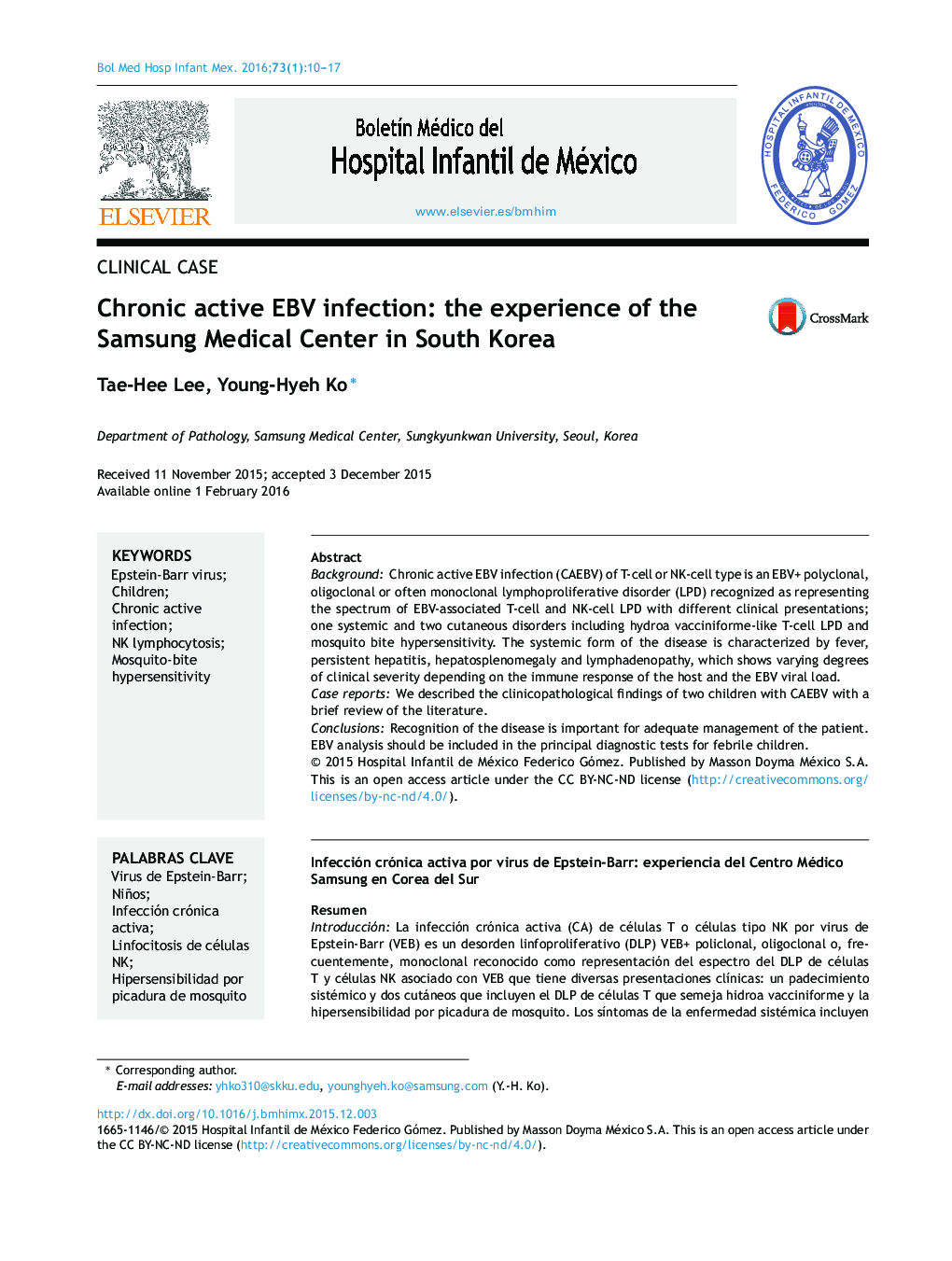| Article ID | Journal | Published Year | Pages | File Type |
|---|---|---|---|---|
| 2721594 | Boletín Médico del Hospital Infantil de México | 2016 | 8 Pages |
BackgroundChronic active EBV infection (CAEBV) of T-cell or NK-cell type is an EBV+ polyclonal, oligoclonal or often monoclonal lymphoproliferative disorder (LPD) recognized as representing the spectrum of EBV-associated T-cell and NK-cell LPD with different clinical presentations; one systemic and two cutaneous disorders including hydroa vacciniforme-like T-cell LPD and mosquito bite hypersensitivity. The systemic form of the disease is characterized by fever, persistent hepatitis, hepatosplenomegaly and lymphadenopathy, which shows varying degrees of clinical severity depending on the immune response of the host and the EBV viral load.Case reportsWe described the clinicopathological findings of two children with CAEBV with a brief review of the literature.ConclusionsRecognition of the disease is important for adequate management of the patient. EBV analysis should be included in the principal diagnostic tests for febrile children.
ResumenIntroducciónLa infección crónica activa (CA) de células T o células tipo NK por virus de Epstein-Barr (VEB) es un desorden linfoproliferativo (DLP) VEB+ policlonal, oligoclonal o, frecuentemente, monoclonal reconocido como representación del espectro del DLP de células T y células NK asociado con VEB que tiene diversas presentaciones clínicas: un padecimiento sistémico y dos cutáneos que incluyen el DLP de células T que semeja hidroa vacciniforme y la hipersensibilidad por picadura de mosquito. Los síntomas de la enfermedad sistémica incluyen fiebre, hepatitis persistente, hepatoesplenomegalia y linfadenopatías que muestran diferente grado de severidad clínica, dependiendo de la respuesta inmune del hospedero y de la carga viral del VEB.Casos clínicosSe describen los hallazgos clínico-patológicos de dos niños con CAVEB y una breve revisión de la literatura.ConclusionesEs importante reconocer esta enfermedad para proporcionar el manejo adecuado al paciente. El análisis de VEB debería incluirse como una de las principales pruebas diagnósticas en niños con fiebre.
